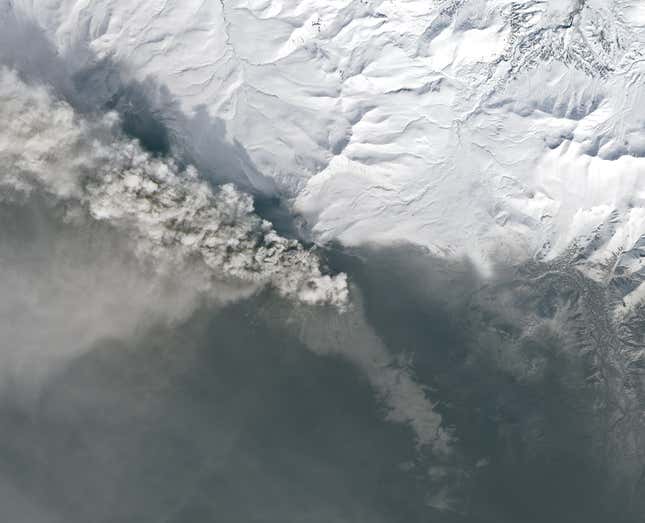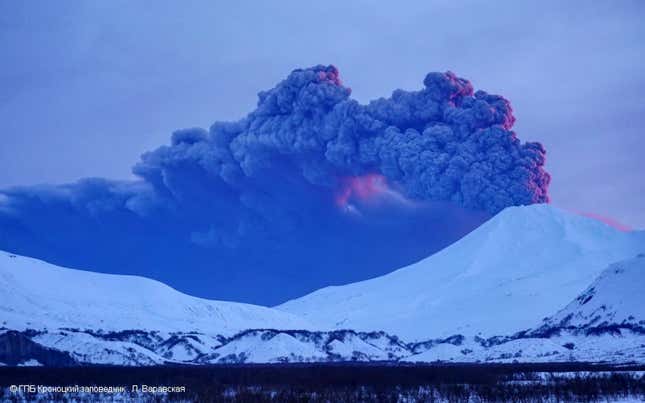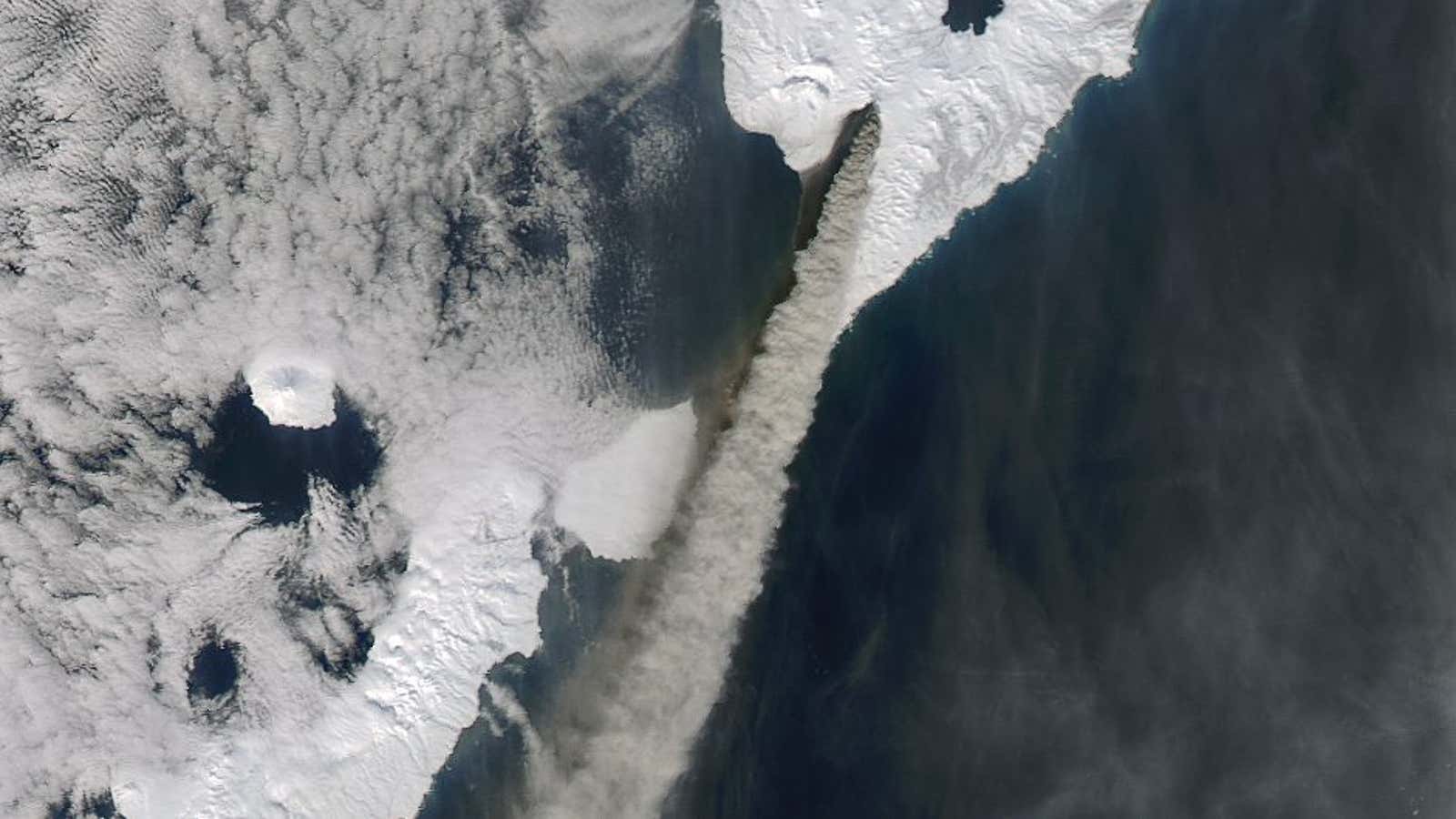A long-dormant volcano in the far east of Russia took geologists by surprise when the eruption began March 24, for the first time since the last confirmed eruption around 1350.
The Kambalny volcano sits on the south of Kamchatka Peninsula, a region east of Siberia and north of Japan that Unesco calls the Land of Fire and Ice for its dramatic juxtaposition of active volcanoes and glaciers. On March 25, a day after the eruption began, NASA Earth Observatory‘s MODIS Terra satellite recorded a trail of an ash plume stretching about 100 km (60 miles) towards the southwest of the peninsula.


The last eruption of Kambalny is thought to have occurred roughly 650 years ago. Radiocarbon dating can give us a pretty good estimate, but scientists can’t determine an exact year says Ed Venzke, data manager of the Smithsonian Global Volcanism Program. The March 24 event was the first Kambalny eruption ever observed.

“It is a pure surprise for us. We continue the monitoring and will analyze possible threats as data come in,” Olga Girina, the head of KVERT, told TASS news agency. She also told the Siberian Times that it’s unclear at the moment if the volcanic activity will escalate—and start spewing magma—or die down.”We cannot even assess, there is no experience of observation, or how it worked previously. That is, it was silent for several hundred years, woke up and now we can just observe how it works,” she said.
